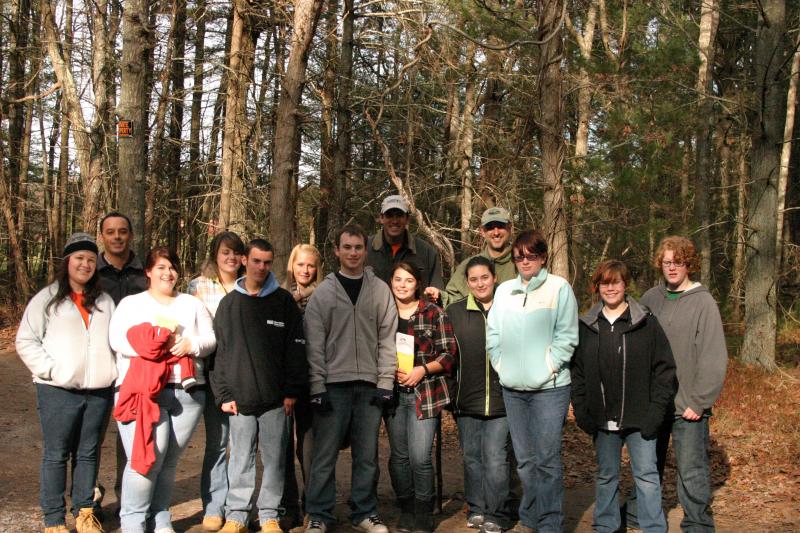Students explore Great Neck
The Wareham Land Trust and Coalition for Buzzards Bay took some students exploring on Great Neck this week, demonstrating the beauty as well as the ecological importance of the town's newest conservation area.
Students in Upper Cape Regional Technical School's environmental science and technology class traveled to the conservation area to learn about watersheds and the role of wetlands in preventing water pollution.
The students first explored a salt marsh at Heron Point, learning about how scientists can determine the extent of the tidal surge due to the different species of grasses present in the marsh. They also discussed the importance of salt marshes in preventing erosion of the coast during storms, as an important 'nursery' for fish and animals, and their role in filtering water that runs off from the land.
"There's a lot going on in a salt marsh," said Wareham Land Trust's Jesse Ferreira, who added that the trip was a good learning experience for him as well. "People have underestimated their ecological value for years."
Teacher Nolan LeRoy said that the class of 13 juniors tries to get outside of the classroom an average of twice a week.
“It gives the kids a sense of how things work in the field,” LeRoy said.
He has been working with Ferreira for the past three seasons on projects ranging from water-quality testing to trail work, but the collaboration with the Buzzards Bay Coalition was a welcome addition, as the students spend their senior year studying wastewater.
The students said that the field trip was helpful – Alyssa Atkinson wants to be a biologist studying marine animals and public health and said that it was interesting to see how the peat in salt marshes help to filter the runoff.
“This is precisely the thing we want to do,” said Robert Hancock, vice president for education and public engagement for the Coalition for Buzzards Bay. “They get to see, feel, and understand the watershed.”













